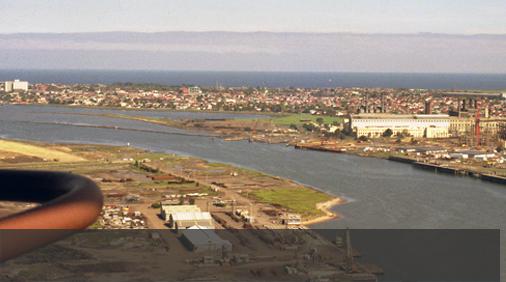As Melbourne developed it became increasingly apparent that a crossing of the Lower Yarra somewhere between Port Melbourne and Williamstown was a necessity to enable traffic to move across the river, other than by the somewhat limited facilities provided by the Williamstown ferry.
In 1957, the Western Industries Association was formed by industries from Williamstown, Spotswood, Altona and Footscray and surrounding areas. This Association was most concerned that a crossing of some description should be built across the Lower Yarra.
In 1958 discussions were carried out between the Government, the association and interested municipalities. The Minister for Public Works intimated that at that time there was no money available to build this crossing, and suggested that it might be financed by private enterprise. In 1961, a company called the Lower Yarra Crossing Company Limited was incorporated, which took up further negotiations with the Government. In 1962, the Country Roads Board, carried out quite considerable sub-surface investigations.
In 1964, a Committee was appointed to examine the question of whether a crossing should be made by way of a bridge, which would be sufficiently high to keep the river open to shipping, or whether it would be more appropriate to construct a tunnel. The committee failed to agree on this question, but the Government eventually decided that the crossing be by way of a high level bridge.
In 1965, the Lower Yarra Crossing Company Inc. went into voluntary liquidation and a new company was formed called the Lower Yarra Crossing Authority Limited. By the Lower Yarra Crossing Authority Act 1965 (No. 7365), the Authority was vested with certain powers, the general scheme of the Act being that it would be able to borrow money on debentures, to finance the construction of the crossing. It was given the necessary powers for the compulsory acquisition of land and to impose tolls on the bridge to enable it to repay the debenture debt the company had raised.
The bridge would be paid for by those using it, eventually becoming the property of the Crown.

